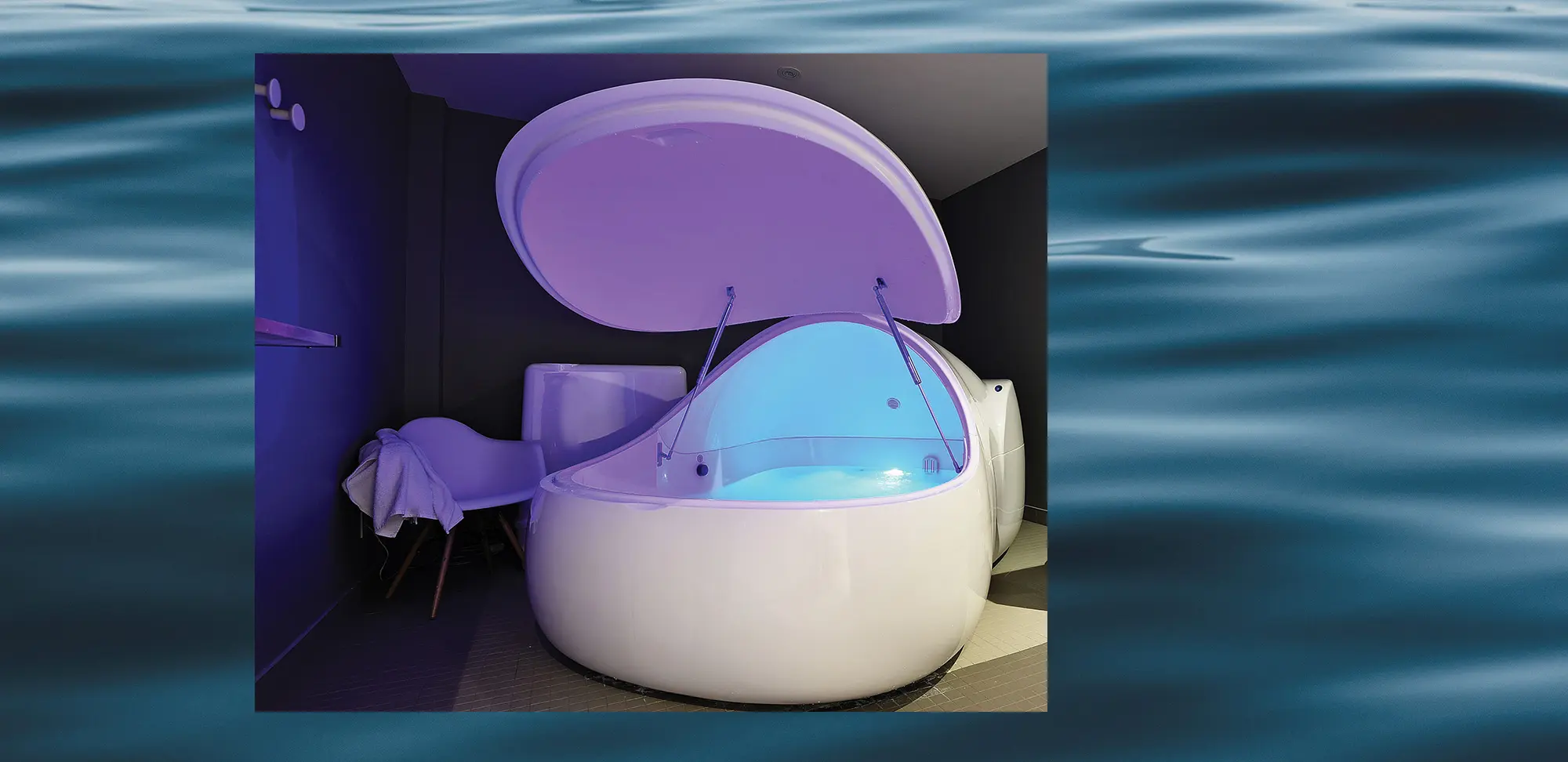You step into a soundproof tank— think big, deep bathtub — filled with about 25 to 30 centimetres of salt water. You sit down, lie back, and … float, in the calm and quiet.
Welcome to the restorative experience known as float therapy.
Flotation therapy sounds just like what it is: floating in a tank (sometimes called a pod) with about 600 litres of water containing between 350 and 550 kilograms of Epsom salts.
“Because of the density of that salt content, you’re able to float effortlessly on the surface of the water, similar to [floating in] the Dead Sea,” says Laura Foster, owner of Floating Therapy in Chatham, Ont.
Float therapy isn’t new — John C. Lilly, American counterculture physician, neuroscientist and psychoanalyst, developed the isolation tank in the 1950s to explore the nature of human consciousness — but it’s trending today to help you relax and, according to recent research, ease muscle tension, improve sleep and even increase creativity.
“One of the benefits is that you’re removing the impact of gravity on the body, so for the first time, really, since we were in the womb, we’re in this environment where there is no pressure on the body and the muscles can relax,” says Foster.
Zero gravity. Cool, right? But why go?
Relaxation, for one. “I have some people who come in because they want to shut off for an hour,” says Foster.
Meditation is another reason. “[Clients] might be into yoga or meditation, or they want to get into meditation and learn the benefits,” says Nadeem Jiwani, owner of Float Valley in Markham, Ont. “The float tank puts you into that state, without you really having to try very hard.”
Floating has been known to alleviate pain, too. One study of 81 patients diagnosed with fibromyalgia reported that after three float sessions they had temporary reductions in pain, muscle tension and stress, and an improvement in quality of sleep.
Flotation therapy can also be used as a tool to treat anxiety and depression. A study of 50 people with depression and anxiety by Dr. Justin Feinstein and colleagues at the Laureate Institute for Brain Research, in Tulsa, Okla., indicated that just a one-hour session could reduce anxiety and improve mood.
That said, not everyone is eager to embrace float therapy. One of the concerns Jasson Grant, co-owner of ISÖ Spa in Ottawa, Ont., hears is fear of claustrophobia. “They’ve had a bad experience in an MRI machine or a tanning bed, so they’re concerned,” he says. But the tanks are quite large, and clients have the option to keep the door open and the tank light on.
There’s also fear of water. “We have a lot of people who can’t swim,” says Grant. “Then they’re shocked that you actually just float on the surface of the water; there’s no swimming involved.”
There is no risk of drowning, either, says Foster. Even if you do fall asleep (which happens) and your head rolls to the side, “the water in your eyes, because it’s so salty, would wake you up immediately.”
And germophobes can relax. Tanks are drained and filtered three to four times between every client, and rooms are cleaned with hydrogen peroxide. “Epsom salts are a natural disinfectant, so that keeps the water very clean,” says Jiwani. “Nothing can survive in that kind of environment.”
Floating is a safe activity for everyone, including people with mobility issues. “As long as you’re able to get in and out of a bathtub on your own, then getting in and out of a float is no issue,” says Foster.
“[Floating] is one of those things [where] you just have to try it to fully understand,” says Foster. Grant agrees. “People are always surprised about the effects on their mind and body.”
Floating by the numbers
Cost: $55 to $70 for a one-hour float
Tank size: 7.5 x 4.5 feet (2.3 x 1.4 metres; single tank with door) and 8.5 x 7 feet (2.6 x 2.3 metres; double open-concept tank)
Water temperature: 34°C to 35.8°C (skin temperature) “Some people ask for [the water to be] a little warmer, and some people want it a little cooler,” says Jasson Grant, co-owner of ISÖ Spa in Ottawa, Ont. “We just need a heads-up when people come in.”
Length of float: 60 minutes (varies)
At some centres, you can book back-to-back sessions for a longer experience. Your skin doesn’t prune by staying in the water, either. “It’s not typical water,” says Laura Foster, owner of Floating Therapy in Chatham, Ont. “You’re not absorbing the water into your skin that way.”
Sessions: Many float centres have memberships that allow you to float on a weekly or monthly basis.
Clothing: You can float in a swimsuit, but many of the float centres will recommend floating nude, “because the idea is to not feel anything on your skin,” says Nadeem Jiwani, owner of Float Valley in Markham, Ont. Some float centres, though, do have a strict no-swimsuit policy, so check before you go.
Time’s up: When your float is over, cues to “wake you” include soft music or lighting in the tank; sometimes it’s a combination of both. “For those who may fall asleep, a gentle filter cycle will begin after a few minutes,” says Foster.










